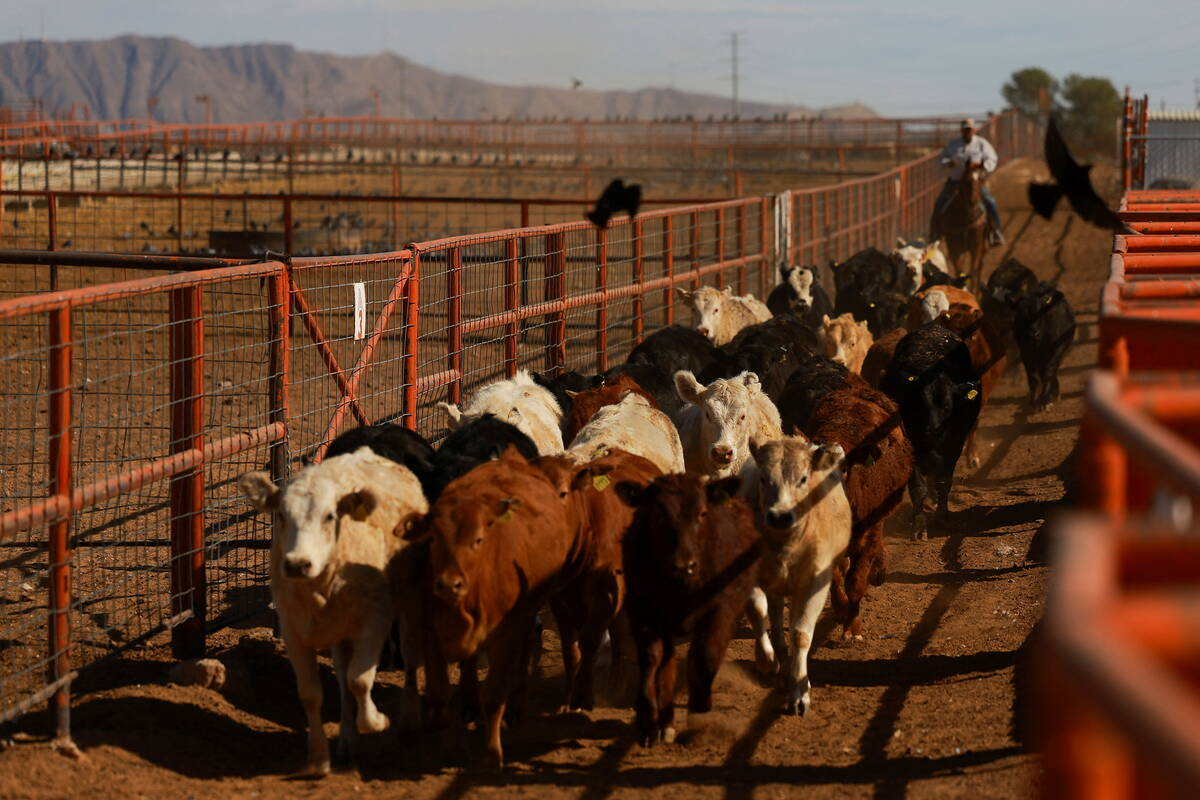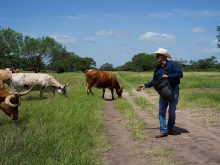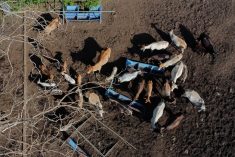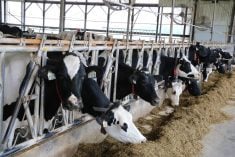CHICAGO, Ill. (Reuters) — The flesh-eating livestock pest New World screwworm has advanced closer to the U.S. border with Mexico, the U.S. Department of Agriculture said, prompting Washington to block imports of Mexican cattle just days after it allowed them to resume at a port of entry in Arizona.
Screwworms are parasitic flies whose females lay eggs in wounds on warm-blooded animals, usually livestock and wild animals. Once the eggs hatch, hundreds of screwworm larvae use their sharp mouths to burrow through living flesh, eventually killing their host if left untreated.
Read Also

Volatile temperatures expected for this winter
DTN is forecasting a lot of temperature variability in the Canadian Prairies this winter. Precipitation should be close to average.
Mexico reported screwworms about 600 kilometres south of the U.S. border in Ixhuatlan de Madero, Veracruz, July 8, the USDA said. The department ordered the closure of livestock trade through southern ports of entry effective immediately.
“Closing the border isn’t just justified, it’s essential,” said Bill Bullard, chief executive officer of U.S. cattle producers’ group R-CALF USA.
An infestation in the United States could add to further tightening supplies of cattle, which are at their lowest levels in decades, and also endanger other livestock and household pets.
The USDA suspended Mexican cattle imports in May after screwworm was detected about 1,100 kilometres from the U.S. border at farms in Oaxaca and Veracruz, Mexico.
The department had said earlier this month that it would resume imports on July 7 at a port of entry in Douglas, Arizona, as part of a phased reopening of the border because screwworms had not been moving north in Mexico.
Now, the USDA needs to see more progress in combating the pest in Veracruz and nearby Mexican states to reopen livestock ports on the southern border, agriculture secretary Brooke Rollins said.
Screwworms were eradicated from the United States in the 1960s when researchers released sterilized male screwworm flies that mate with wild female screwworms to produce infertile eggs.
The USDA said last month that it would build a sterile fly dispersal facility in Hidalgo County, Texas, and consider a sterile fly production facility.
The agency should immediately begin work on a U.S. sterile fly production facility, said Colin Woodall, CEO of the National Cattlemen’s Beef Association industry group.
“The New World screwworm’s northward movement jeopardizes the safety of American agriculture,” he said.
“We cannot wait any longer.”
Meanwhile, the Mexican government said July 7 that it has started to build a $51 million facility in the country’s south as part of an effort to combat screwworm.
The country’s agriculture ministry said in a statement that the plant, a joint project with the U.S., will produce 100 million sterile screwworm flies per week once completed in the first half of 2026.
The release of sterile flies, which reduce the reproducing population of the wild flies, is a key tool in controlling the pest.
The U.S., Mexico’s biggest trading partner, is paying $21 million of the cost and Mexico is spending $30 million, the statement said.
Mexico is also using sniffer dogs to detect the parasite.
With tail wagging, tongue out and ears perked, Hummer, a young mixed breed dog with a slick black coat, recently sat down in front of a sample of screwworm scent, promptly accepting praise and treats from his handler.
Trained to detect the smell of screwworm, Hummer and his canine colleagues offer a glimmer of hope in controlling the worm.
At a government-run training centre about an hour outside Mexico City, officials from a special unit of the countrys health safety agency Senasica run a three-month intensive training program for a select group of dogs to sniff out screwworm and other pests or diseases in live animals or agricultural products.
Most of the dogs are rescued from shelters, allowing animals that may have been abandoned for being too difficult to find a new life.
Feisty pups that steal food from the table, never calm down and have a relentless desire to play are the perfect candidates.
“Sometimes what people don’t want is the ideal for us,” said Cesar Dangu, head of the canine training center Ceacan.
“We also have to look for other qualities: that they dont get angry, they are affectionate, they can live with people and with other animals.”
Not all dogs respond to the aroma of screwworm.
Some will refuse to approach the aroma, Dangu said, making those that take to it even more valuable in their task.
On a sunny afternoon at Ceacan, just hours after the most recent border closure announcement, the work of the dogs took on new urgency.
There are only six screwworm-sniffing dogs working at a livestock border passage in the southern state of Chiapas, which borders Guatemala, the heart of Mexico’s screwworm infestation.
Havana, a two-year-old Shepherd mix, practices detecting screwworm on cow-sized equipment inside a greenhouse, a training exercise meant to mimic the sweltering heat the dogs must tolerate in Chiapas, said instructor Mayte Tontle.
“We want our dogs to adapt as much as possible to the real-life conditions,” Tontle said.
With at least 47 new cases of screwworm detected daily in Mexico, according to government data, the handful of highly trained canines are a small element of Mexico’s response.
The dogs trained at Ceacan will work until they complete eight years on the job or turn 10 years old, whichever comes first.
After that, they retire.
“I would say 99 per cent of the dogs are adopted by their handler. There is an unbreakable link because of the love between the handler and the dog,” Dangu said.















